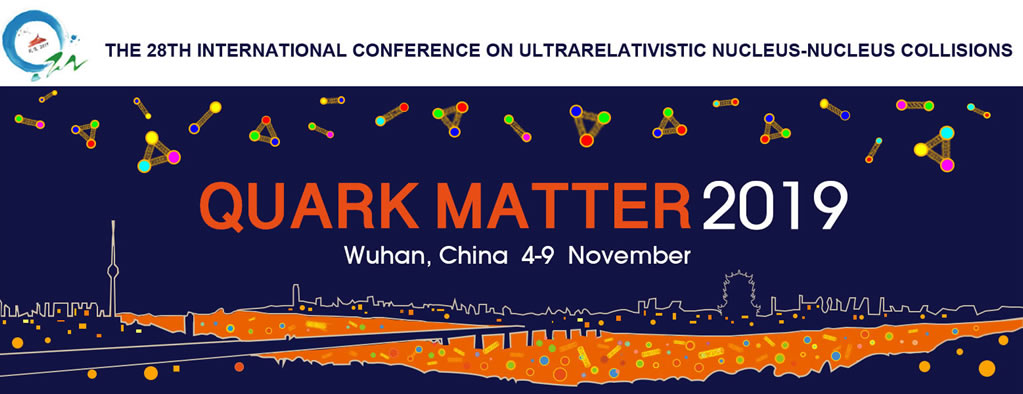Speaker
Description
Effective Field Theories (EFTs) provide a systematic framework in which all terms consistent with the symmetries up to a specific mass dimension are written down in the lagrangian. We explore the consequence of the assumption that a fermionic EFT describes the QCD crossover.
This EFT was analyzed for zero quark number chemical potential ($\mu=0$) in Ref. [1] considering all chirally symmetric terms up to dimension $6$. Following previous literature [3,4] the only explicit chiral symmetry breaking term considered was the quark mass $m_q\bar{\psi}\psi$. The independent coupling constants of the theory were fit to Euclidean $\pi$ velocity and the $\pi$ screening mass measured on the lattice [2] at $T=0.84T_{co}$ ($T_{co}$ is the crossover temperature) and yielded an independent prediction: $\pi$ decay constant $f$ which agreed with the lattice data. The theory describes the variations of these $\pi$ properties near the crossover temperature at $\mu=0$.
In this work we analyze the implications of the effective theory for finite $\mu$. From the symmetry point of view a finite quark mass $m_q\bar{\psi}\psi$ breaks chiral symmetry, $\mu\bar{\psi}\gamma^4\psi$ breaks CP symmetry. Usually, analysis is simplified by assuming that only soft symmetry breaking terms (dimension less than $4$) appear which means that these two are the only explicit symmetry breaking terms in the lagrangian. In an effective theory with a cutoff however, a softly broken symmetry will inevitably lead to terms of dimension greater than $4$, which break the symmetry under consideration -- also known as hard symmetry breaking.
We study the consequences of adding hard breaking of symmetries in fermionic effective theory models for QCD. We focus on the behaviour of two mean fields, the chiral condensate $\langle\bar{\psi}\psi\rangle$ and the number density $\langle\bar{\psi}\gamma^4\psi\rangle$ in the QCD phase diagram. In the absence of hard breaking terms, the two condensates are connected by mean field definitions of the mass and the chemical potential.
At $\mu=0$ the impact of hard chiral symmetry breaking is simply a redefinition of the four Fermi coupling constant and is inconsequential. For finite chemical potential in the chiral limit no new terms appear but we show using an analysis with two mean fields that the curvature of the critical line changes. This depends on a new linear combination of the coupling constants of the dimension $6$ operators and this combination can be chosen to match the value of the curvature calculated on the lattice [5]. This resolves the discrepancy of our previous calculation [1] of the curvature of the critical line and the lattice.
Finally, when $m_q$ and $\mu$ are both finite, hard breaking induces a direct coupling between the two condensates. This additional coupling affects the location of the crossover temperature (defined as the maximum of chiral susceptibility) as a function of the chemical potential. The curvature of the crossover line can be used to match this additional constant and this fixes the phase diagram in this framework. This constrains the location of the QCD critical point.
[1] S.~Gupta and R.~Sharma, An effective field theory for warm QCD, arXiv:1710.05345 [hep-ph].
[2] B.~B.~Brandt, A.~Francis, H.~B.~Meyer and D.~Robaina, Chiral dynamics in the low-temperature phase of QCD, Phys.\ Rev.\ D {\bf 90} (2014) no.5, 054509 [arXiv:1406.5602 [hep-lat]].
[3] Y.~Nambu and G.~Jona-Lasinio, Dynamical Model Of Elementary Particles Based On An Analogy With Superconductivity. 1, Phys.\ Rev.\ {\bf 122} (1961) 345;
Y.~Nambu and G.~Jona-Lasinio, Dynamical Model Of Elementary Particles Based On An Analogy With Superconductivity. Ii, Phys.\ Rev.\ {\bf 124} (1961) 246.
[4] S.~P.~Klevansky, The Nambu-Jona-Lasinio model of quantum chromodynamics, Rev.\ Mod.\ Phys.\ {\bf 64} (1992) 649.
[5] O.~Kaczmarek, F.~Karsch, E.~Laermann, C.~Miao, S.~Mukherjee, P.~Petreczky, C.~Schmidt and W.~Soeldner {\it et al.}, Phys.\ Rev.\ D {\bf 83} (2011) 014504 [arXiv:1011.3130 [hep-lat]];
R.~Falcone, E.~Laermann and M.~P.~Lombardo, PoS LATTICE {\bf 2010} (2010) 183 [arXiv:1012.4694 [hep-lat]];
G.~Endrodi, Z.~Fodor, S.~D.~Katz and K.~K.~Szabo, JHEP {\bf 1104} (2011) 001 [arXiv:1102.1356 [hep-lat]];
C.~Bonati, M.~D'Elia, M.~Mariti, M.~Mesiti, F.~Negro and F.~Sanfilippo, Phys.\ Rev.\ D {\bf 90} (2014) 11, 114025 [arXiv:1410.5758 [hep-lat]];
L.~Cosmai, P.~Cea and A.~Papa, arXiv:1410.2471 [hep-lat].
